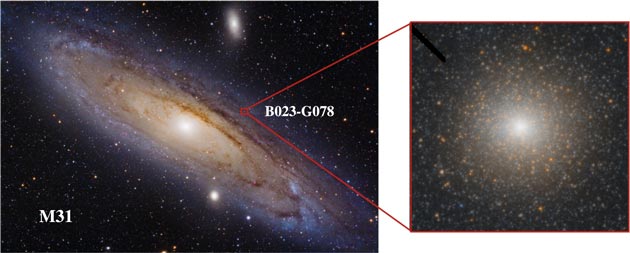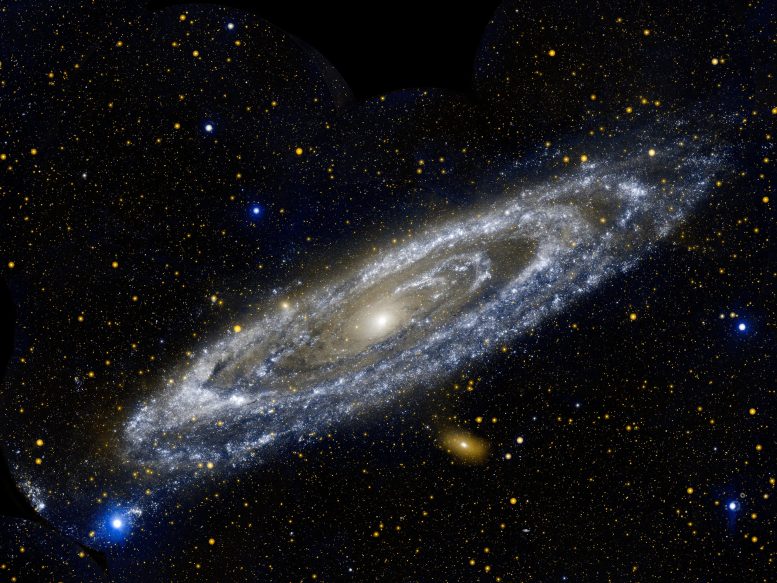This artist’s impression depicts a black hole. Credit: ESA/Hubble, ESO, M. Kornmesser
The discovery, one of the only confirmed intermediate-mass black holes, lives in an equally rare object known as a low-mass, stripped nucleus.
Astronomers discovered a
The Andromeda galaxy, or M31, is our Milky Way’s largest galactic neighbor. Credit: NASA/JPL-Caltech
The black hole was hidden within B023-G078, an enormous star cluster in our closest neighboring galaxy Andromeda. Long thought to be a globular star cluster, the researchers argue that B023-G078 is instead a stripped nucleus. Stripped nuclei are remnants of small galaxies that fell into bigger ones and had their outer stars stripped away by gravitational forces. What’s left behind is a tiny, dense nucleus orbiting the bigger galaxy and at the center of that nucleus, a black hole.
“Previously, we’ve found big black holes within massive, stripped nuclei that are much bigger than B023-G078. We knew that there must be smaller black holes in lower mass stripped nuclei, but there’s never been direct evidence,” said lead author Renuka Pechetti of Liverpool John Moores University, who started the research while at the U. “I think this is a pretty clear case that we have finally found one of these objects.”
The study was published on January 11, 2022, in The Astrophysical Journal.

The left panel shows a wide-field image of M31 with the red box and inset showing the location and image of B023-G78 where the black hole was found. Credit: Iván Éder, https://www.astroeder.com/; HST ACS/HRC
A decades-long hunch
B023-G078 was known as a massive globular star cluster—a spherical collection of stars bound tightly by gravity. However, there had only been a single observation of the object that determined its overall mass, about 6.2 million solar masses. For years, Seth had a feeling it was something else.
“I knew that the B023-G078 object was one of the most massive objects in Andromeda and thought it could be a candidate for a stripped nucleus. But we needed data to prove it. We’d been applying to various telescopes to get more observations for many, many years and my proposals always failed,” said Seth. “When we discovered a supermassive black hole within a stripped nucleus in 2014, the Gemini Observatory gave us the chance to explore the idea.”
With their new observational data from the Gemini Observatory and images from the (function(d, s, id){
var js, fjs = d.getElementsByTagName(s)[0];
if (d.getElementById(id)) return;
js = d.createElement(s); js.id = id;
js.src = "https://connect.facebook.net/en_US/sdk.js#xfbml=1&version=v2.6";
fjs.parentNode.insertBefore(js, fjs);
}(document, 'script', 'facebook-jssdk'));
Read original article here
